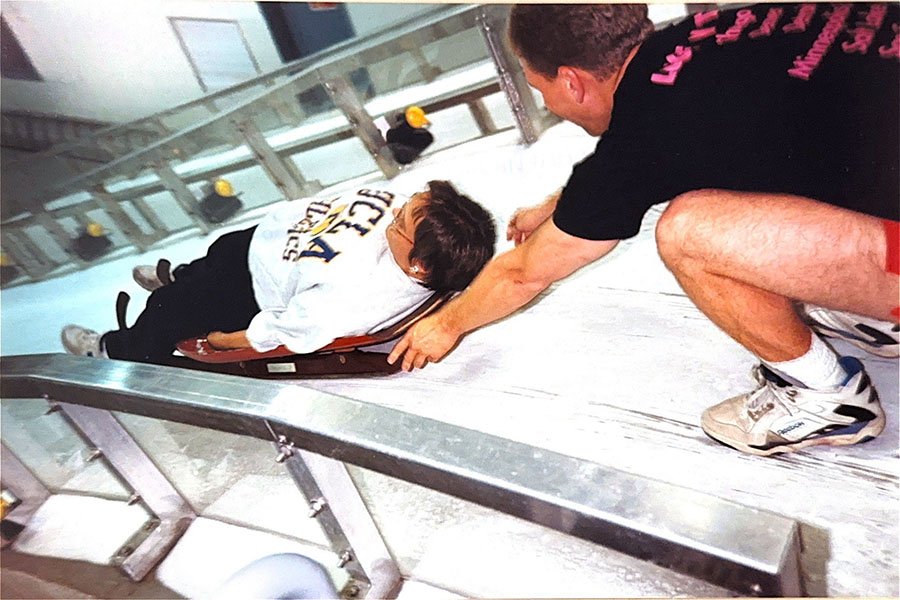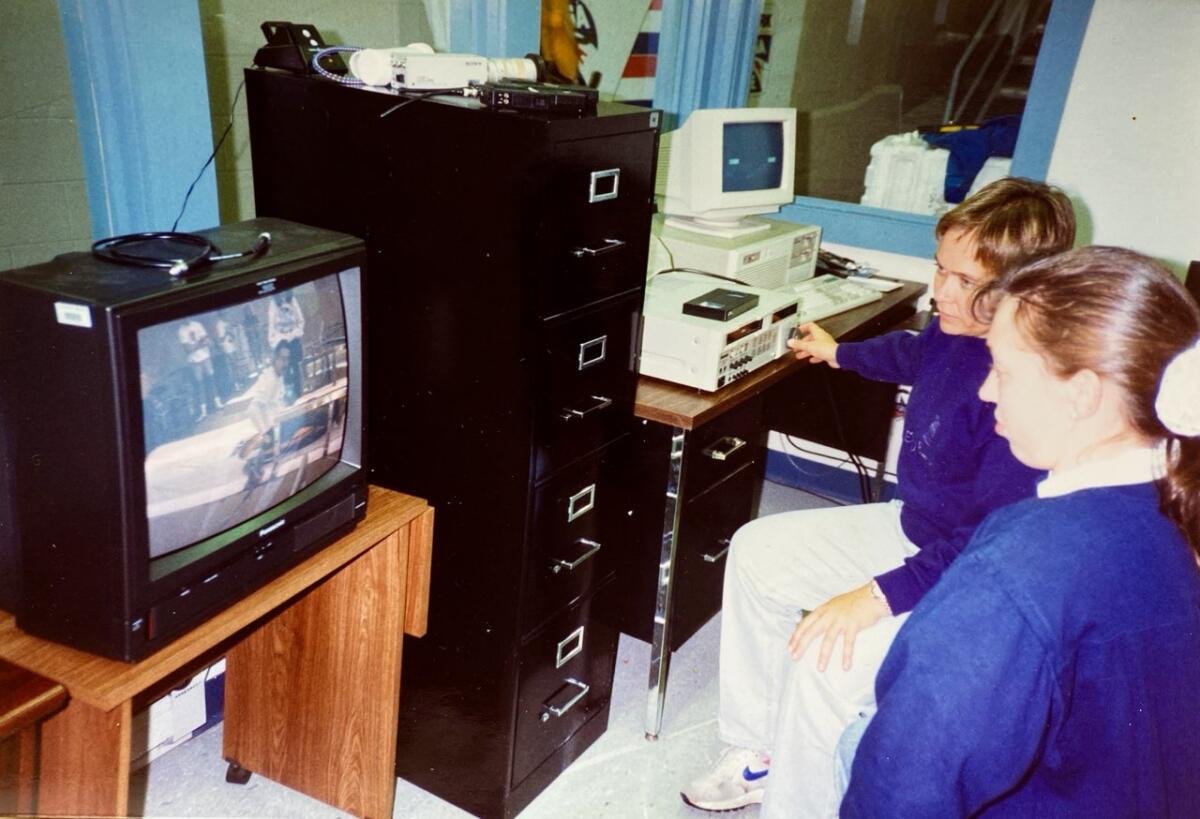Engineering alumna looks ahead to Italy, next Olympics

Her University of Minnesota graduate research still impacts USA luge and speedskating teams
A thousandth of a second can sometimes mean the difference between a gold medal and a silver one at the Olympic Games. Just ask any world-class athlete—or ask Margaret “Marge” Hartfel. This University of Minnesota alumna, who now mentors current students at the Earl Bakken Medical Device Center, works with Team USA to make Olympians go faster, especially down an icy track.
“My involvement with the Olympic program really began in graduate school, when I led a research project on sprint starts in speed skating at the 1988 Calgary Winter Olympics in Alberta, Canada,” said Hartfel, who holds two degrees from the College of Science and Engineering on the Twin Cities campus—a master’s in mechanical engineering and a Ph.D. in biomedical engineering.
As she was nearing the end of that research project, her advisor Art Erdman asked if she wanted to work with the USA Luge National Team.
Erdman, a renown biomechanics and human performance expert at the University of Minnesota, had received a call from 3M looking for someone to participate on their engineering team that was working on making faster luge sleds. At that time, 3M was both a sponsor of USA Luge and a global sponsor of the Olympics.
Hartfel spent a lot of time in Lake Placid, New York. Her days at the team’s training center included setting up a system to monitor the athletes’ starts, sled speeds, and overall sled performance.
Lake Placid, which has hosted the Winter Olympic Games twice (1932 and 1980), is one of only two full-length, refrigerated Olympic luge tracks in the United States. The other is in Park City, Utah. Luge made its Olympic debut in 1964. The sport will host five events at the 2026 games in Italy: Men’s singles, women’s singles, men’s doubles, women’s doubles, and a team relay.
Because competition remains fierce in luge, the University of Minnesota researchers were asked by USA Luge to not make their findings public.
Hartfel’s impact was significant though, said Erdman.
“She played a key role in setting up cameras and key data collection units at the Lake Placid training center,” he explained, “and this was back when we didn’t have the sophisticated technology that we have now to easily track speed and quickly make adjustments on the sleds.”

Hartfel parlayed the luge study into her University of Minnesota Ph.D. research and biomechanics experience into a nearly 25-year career with 3M. In retirement, she continues to participate in research with the USA Luge national and Olympic teams—and she gives back regularly to her alma mater, the College of Science and Engineering.
Most recently, she established fellowships in the Departments of Mechanical Engineering and Biomedical Engineering for graduate students to pursue engineering on the Twin Cities campus.
“Graduate and undergrad training in engineering gives you so many opportunities to go in so many directions,” Hartfel said, when asked about why she chose the field. “You will learn concepts that can be applied in many areas—and this is the perfect place to go. I looked at a variety of universities of graduate degrees, and the U of M came out at the top. The University of Minnesota made such a difference to my life.”
--------------
Learn how to start your own student fellowship on the CSE Advancement website.
Learn more about the Encore Mentorship Program that Hartfel co-founded at the Earl E. Bakken Medical Devices Center—it pairs retired experts from various industries with undergraduate and graduate students at the University of Minnesota.
